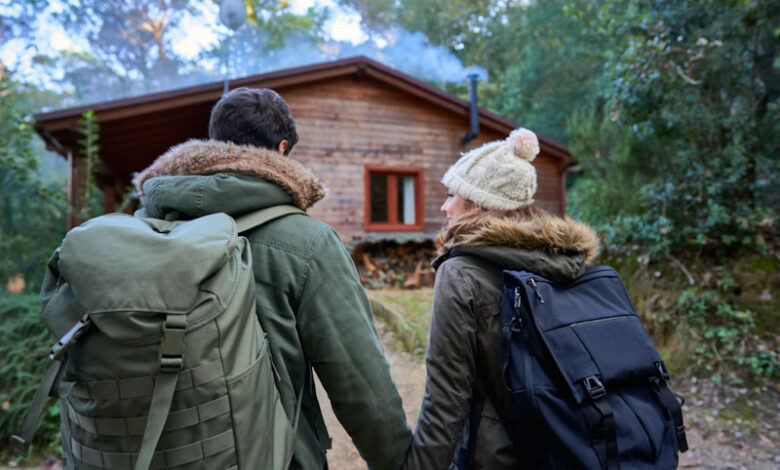4 tips to help you bug out faster

If you read about bugging out online or purchase various books and magazines covering this topic, you will soon learn that some survival experts recommend specific timeframes for bugging out. Some say you need to get out the door as soon as your gut tells you to do so, while others recommend a 30, 15, and even a 10-minute timeframe to bug out successfully.
The reality is entirely different, and various factors influence your time window for evacuating and getting on the road safely and on time. Some train to bug out in less than 30 minutes, while others require more than an hour to gather everyone and everything and be gone.
Since few are survivalist experts, I believe it’s always good to be honest with your readers and avoid creating false expectations. In today’s article, I will share some tips on what you need to do to bug out faster. These tips are based on my personal experience, and you will see there’s a certain logic behind them and a lot of common sense.
Do this to bug out faster:
Check and update your bug-out bag regularly
This is one of the topics that few gurus actually talk about and is grossly ignored by everyone, although it should be obvious by now that you need to check your bug-out bag and update it according to your growing needs. You check your food storage for expired items and rotate your canned goods, but somehow you make a bug-out bag and forget about it.
If you are forced to evacuate in the middle of winter and you have clothes for spring and summer in your bug-out bag, it’s obvious that you will waste precious time changing clothing items. Always check the items inside your bug-out bag and make sure they are updated. This goes for everything inside your bag, including medicine and other items that are known to “last forever”.
Here are a few examples from my family:
- Both my wife and I wear glasses, and we have a spare in our bags. When she changed her glasses because her vision had a slight correction, she forgot to purchase a new spare following the new prescription.
- When we changed the diapers for our toddler from the classic ones with straps to the pants ones, I asked my wife, and she didn’t update the bag for our daughter since the old ones could still be used. That was true, but changing her is much easier and faster with the pants-diaper type.
- Our nephews spend one month with us (sometimes more) during the summer. They play with the neighbor’s kids and often raid our bug-out bags for “candy”, our protein bars. I learned to check the bags every time they leave to make sure the protein or meal replacement bars are still there.
- Over time, I bought various clothing items for my bug-out bag of higher quality, and I had to update the bag. Sometimes I would forget about the old items and leave them in the bag as well.
And these are just a few examples; various situations can occur that would “force” you to update your bug-out bag. My advice is to regularly check it and make sure you’re not wasting time looking for misplaced or missing items when you should be heading out.
Make a check list for your bug out vehicle
There are various things you should keep in mind when preparing your bug-out vehicle, and it all depends on what type of vehicle you are using, who drives it, what goes in it, and so on.
First of all, you will see a lot of people telling you to keep a full tank of gas every time you return home, and this is just not possible for most people. You need a certain learning curve to get into this habit, and it’s not easy to make it a permanent custom. Not to mention, filling up the gas tank is not feasible for many folks, especially considering that many families are struggling financially and may have other priorities.
Second, if you have two or more cars and decide to use a certain vehicle due to its characteristics (better mileage, larger storage room, off-road capabilities, etc.), the person who drives that vehicle more often or on a daily basis should be in charge of prepping it for the road since they know its strengths and quirks. The same person should make a checklist of what goes in and on the car (if applicable) when evacuating. When you have the time, go over the checklist and fill the car with what’s on it, and you will discover how much time that requires.
Third, always have some spare fuel and tools. If you have an off-road vehicle that you plan on using to bug out or if you plan to use the family SUV, keep a gas canister at home. When talking about tools, I’m referring mostly to tools that will help you get out of a pickle when your car gets stuck somewhere and tools to do small repairs, like fixing a flat tire. Most of these new cars are difficult to be fixed by the average Joe, and sometimes, there’s no point in even trying if you’re not a mechanic.
I have an old Ford Bronco that I plan to bug out with and also take my wife’s SUV when evacuating. I keep the Bronco in good shape and have extra gas for it. The SUV goes through regular maintenance and is a good and reliable car (a Toyota). However, I won’t have any problem ditching it if I have to take less-traveled roads, and I’ve made a list of what goes into each car based on the importance of each item.
Make sure everyone is accounted for
This topic has been discussed over and over again, and it should be obvious by now that you need a rendezvous point and the means to get in contact with everyone. Humans are easygoing when they work together, and if your family understands why you are prepping and supports your ideas and actions, there should be no problem bringing everyone together.
However, animals are a totally different breed (pun intended), and for most of us, leaving them behind is out of the question. Now, making sure you have crates for each of them, enough food, and water is common sense, and everyone should prepare as well as they can. During evacuation, problems appear when pet owners are unaware of their whereabouts or they just panic and forget about them completely.
I have two dogs and three cats, and while the dogs are trained and listen to every single one of our commands, the cats are more problematic. If I’m forced to evacuate, I just need to put the crates in the Bronco and the dogs will follow. However, one cat likes to hide under the couch when it’s scared, and I have to move the couch to get it out; one will jump on the cabinets in the kitchen, and I have to use a three-step ladder to get it down; and the third one just runs around panicked, and we need to throw a towel or blanket over it to catch it.
Learn about your pets’ habits and know how to retrieve them before the brown stuff hits the fan; it will save you a lot of time. Leaving them behind can create emotional trauma, and that’s the last thing you need when fighting for your survival, especially if you have young kids.
When it comes to animals, there’s also the topic of farm animals. Here the situation is much harder and complicated, and evacuation is a complex task. There’s no way you will do that within a 30-minute timeframe, and oftentimes you will need the help of every single family member and also the help of your neighbors. I know this from personal experience as I helped my father-in-law take care of his animals during a flood. We had to put crates up in the barns for his chickens and other birds. We had to borrow a trailer to transport the horses and cows, and a lot of people had to be involved. It was a dreadful experience, to say the least.
Have everything packed and ready
Everything that needs to come with you should be pre-packed and ready to be loaded without too much hassle. This means that if you have a baby bag and baby supplies, those should be packed and kept in a specific location. Also, you need to check these supplies more often compared to your other ones because babies grow fast and they need various changes of clothes, different formula, different toys, etc. I know this from personal experience, so trust me, you need to update the “baby bag” more often.
If you have food and water supplies, and other items that are bulky, make sure you are able to load them into the vehicle by yourself. I know people who plan to take a generator with them and various other heavy items (like a dirt bike). In these cases, they have a pulley system installed in the garage to make their job as easy as possible. I don’t know what supplies you plan on taking with you, but make sure you are able to load them by yourself. You may be the only one at home when disaster strikes, and you need to make sure nothing essential is left behind.
Label boxes and anything you need so that you won’t have to open various containers to find your camping gear, knives, batteries, etc. Organize items, group them together, and label everything accordingly.
Concluding
So, there you have it, a few practical tips that will help you shorten your bug-out time and raise awareness about your preps. As I’ve said before, prepping for bugging out is different from one family to another, and while it’s smart to listen to those more experienced, it’s wiser to adapt their suggestions to your personal plan. There is no magic number when it comes to bugging out, and you may have minutes or hours to do so. However, make sure you make your life easier and check if these tips apply to you. As always, please use the comment section and let us know if you have additional valuable insights.
Read the full article here






